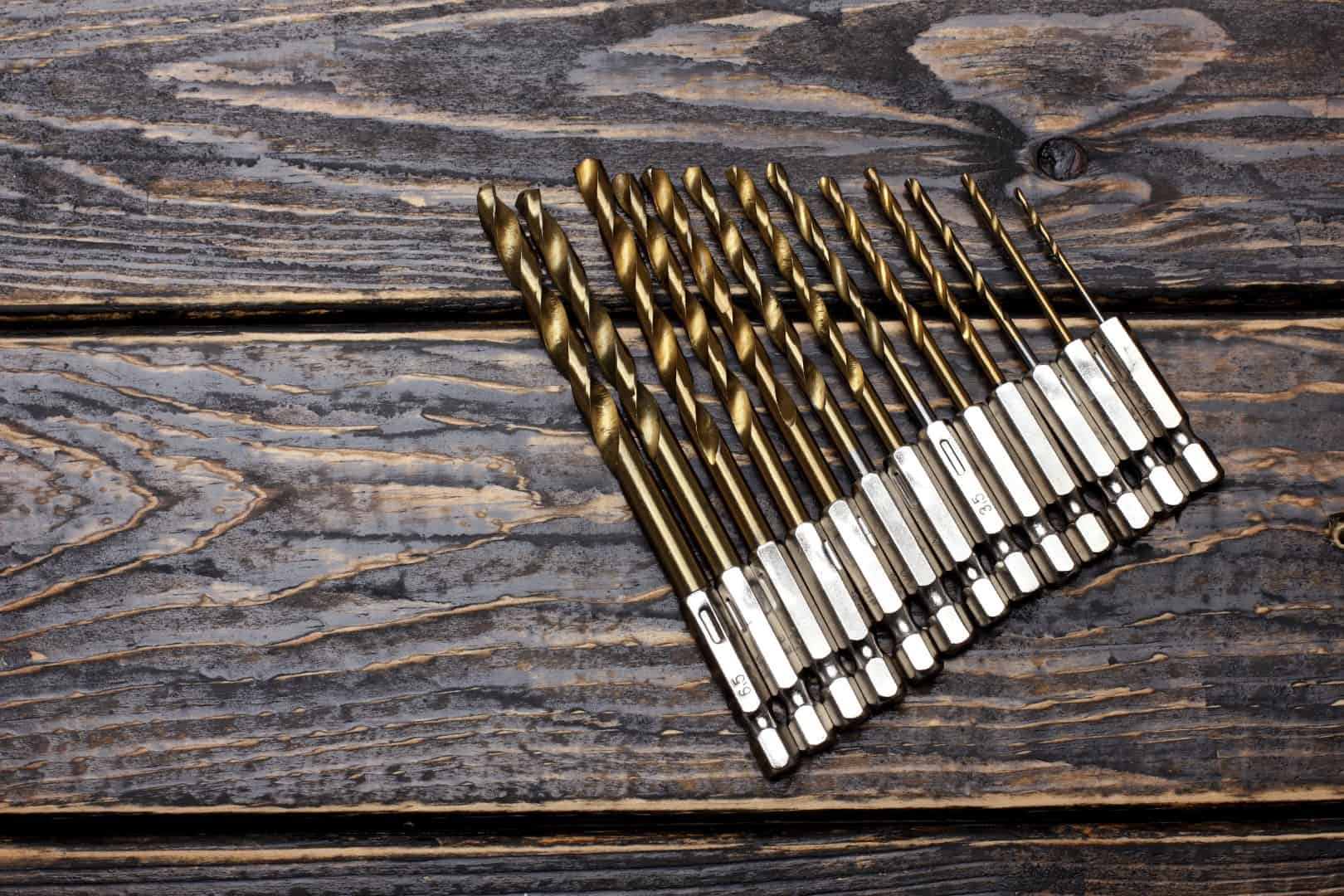Why do drill bits get stuck in wood? Well, it’s one of those frustrating problems that many DIY enthusiasts and woodworkers encounter. You’re in the middle of a project, drilling away, and suddenly, your drill bit refuses to budge. It’s like it’s stuck in there for good! But don’t worry, we’ve got you covered. In this article, we’re going to explore the reasons behind this dilemma and give you some helpful tips on how to prevent it.
Have you ever wondered why drill bits sometimes get stuck in wood? It turns out that there are a few factors at play. First, the type of wood you’re drilling into can make a difference. Some types of wood, like hardwoods, can be denser and tougher, causing your drill bit to struggle and get lodged in the material. Another reason is the size of the drill bit itself. If you’re using a large bit, it can generate a lot of friction and heat, which can lead to sticking. Additionally, improper drilling techniques or a dull drill bit can contribute to the problem.
But fear not! There are several steps you can take to prevent your drill bits from getting stuck. One important tip is to choose the right drill bit for the type of wood you’re working with. Using a sharp drill bit and lubricating it with a bit of oil can also help reduce friction and make drilling smoother. And of course, being mindful of your drilling speed and technique is crucial. So, let’s dive deeper into the world of drill bits and discover how you can avoid that frustrating stuck-in-wood situation!
Have you ever wondered why drill bits sometimes get stuck in wood? There are a few reasons behind this common issue. Firstly, dull drill bits can struggle to penetrate wood effectively. Additionally, using excessive force or moving too quickly can cause the bit to get lodged. It’s important to choose the right type and size of drill bit for the job to avoid getting stuck. Proper technique, sharp bits, and patience will help prevent this frustrating problem.

Why Do Drill Bits Get Stuck in Wood?
Drill bits are an essential tool for carpenters and DIY enthusiasts alike. However, it can be frustrating when a drill bit gets stuck in wood, especially if you’re in the middle of a project. Understanding why this happens and how to prevent it can save you time and frustration. In this article, we will explore the reasons behind drill bit jamming in wood and provide useful tips to avoid this issue.
Factors Affecting Drill Bit Stuck in Wood
Drilling through wood may seem like a straightforward process, but several factors can contribute to drill bit sticking.
1. Dull or Damaged Drill Bits
One common reason for drill bits getting stuck in wood is dullness or damage. Over time, drill bits can become dull from extended use or hitting hard materials like knots or nails in the wood. Dull bits have a harder time cutting through wood, leading to increased friction and a higher chance of getting stuck. Similarly, if a drill bit is damaged or has a chipped edge, it may not be able to penetrate the wood effectively, causing it to get lodged.
To prevent this, regularly inspect your drill bits for signs of dullness or damage. Replace them as necessary to ensure smooth and efficient drilling.
2. Incorrect Drill Bit Selection
Using the wrong drill bit can also cause it to get stuck in wood. Different types of drill bits are designed for specific materials, and using the wrong one can lead to ineffective drilling or blockage. For example, a spade bit may work well for drilling through softwoods, but it may struggle in hardwoods. Using an inappropriate bit can result in the bit getting stuck or breaking in the wood.
Always ensure you select the correct drill bit for the type of wood you are working with. Consult the manufacturer’s guidelines or seek professional advice if you are unsure.
3. Insufficient Drill Speed
Drilling at the wrong speed can also contribute to drill bits getting stuck in wood. A drill operating at too low of a speed may generate excessive heat and cause the wood to burn, leading to the bit getting stuck. On the other hand, drilling too quickly may not allow the bit to effectively cut through the wood, resulting in similar issues.
Refer to the recommended speed settings for your specific drill bit and adjust accordingly. It’s important to find the right balance between speed and control to prevent jams.
4. Wood Grain Direction
The direction of the wood grain can also influence drill bit jamming. When drilling against the grain, the natural fibers of the wood can snag the flutes of the bit, causing it to get stuck. This is more likely to occur with long, deep holes or when drilling into denser hardwoods.
When drilling, be mindful of the wood grain direction. If possible, adjust your drilling angle to avoid drilling against the grain. Alternatively, you can use a backing board, such as scrap wood, to support the exit point of the drill hole and minimize the risk of the bit getting stuck.
5. Insufficient Pressure or Improper Technique
Using too little pressure or improper drilling techniques can contribute to drill bit jamming. Insufficient pressure can prevent the bit from properly engaging with the wood, causing it to spin in place or get stuck. Similarly, using inappropriate drilling techniques like excessive wobbling or tilting can lead to the bit becoming lodged.
Apply moderate and consistent pressure when drilling into wood. Maintain a steady hand and follow a straight and controlled drilling motion. This helps ensure that the bit makes clean and efficient cuts, minimizing the risk of it getting stuck.
Key Takeaways: Why do drill bits get stuck in wood?
- 1. Incorrect drilling speed or pressure can cause the drill bit to get stuck in wood.
- 2. Using a dull or low-quality drill bit increases the chances of it getting stuck.
- 3. Knots or other hard spots in the wood can be difficult for the drill bit to penetrate, leading to it getting stuck.
- 4. The drill bit may get clogged with wood shavings, preventing it from moving forward.
- 5. Improper alignment or angle while drilling can result in the bit getting wedged in the wood.
Frequently Asked Questions
Drill bits getting stuck in wood can be frustrating. Here are some common questions and answers to help you understand why this happens:
1. What causes drill bits to get stuck in wood?
Drill bits can get stuck in wood for several reasons. One common cause is a build-up of wood chips and debris. As you drill into the wood, the debris can accumulate in the flutes of the drill bit, causing it to become jammed. Another cause could be using the wrong type of drill bit for the job. For example, using a twist bit instead of a spade bit for drilling large holes in wood can increase the chances of the bit getting stuck.
To prevent bits from getting stuck, it’s important to clear away wood chips frequently during the drilling process. Also, make sure to use the appropriate drill bit for your specific task to minimize the risk of getting it stuck.
2. Can a dull drill bit get stuck in wood?
Yes, a dull drill bit can get stuck in wood. When a drill bit is dull, it struggles to cut through the wood effectively, causing it to exert more force and get stuck. Dull bits also tend to generate more heat, which can cause the wood to expand and grip the bit tightly. Additionally, a dull bit is more likely to create splinters and tear-out, further increasing the chances of it getting stuck.
To prevent drill bits from getting stuck due to dullness, make sure to regularly inspect and sharpen them. Dull bits not only compromise your drilling efficiency but also increase the risk of getting stuck in the wood.
3. How can I prevent a drill bit from getting stuck in hardwood?
Preventing a drill bit from getting stuck in hardwood requires some precautionary measures. First, it’s essential to choose the correct type of drill bit for hardwood. For hardwood, using a brad point bit or a carbide-tipped drill bit can provide better results. Additionally, drilling at a slower speed and applying consistent pressure can help reduce the chances of the bit getting stuck.
Furthermore, clearing away wood chips and debris frequently during the drilling process is crucial. This prevents the build-up that can lead to the bit getting jammed. Taking your time and being patient with hardwood can go a long way in preventing drill bits from getting stuck.
4. Are there any techniques to remove a stuck drill bit from wood?
If your drill bit gets stuck in wood, there are a few techniques to remove it. One method is to gently tap the back of the drill bit with a hammer while applying backward pressure to loosen it. Another option is to use pliers to grip the shank of the bit firmly and then rotate it counterclockwise to release it from the wood.
If these methods don’t work, you can try using a drill bit extractor, which is a specialized tool designed to remove stuck drill bits. It is important to proceed with caution when attempting to remove a stuck drill bit to avoid damaging the wood or the drill itself. If you’re unsure or the bit remains stuck, it’s best to seek assistance from a professional.
5. Can drill damage get stuck in wood due to excessive force?
Yes, drill bits can get stuck in wood if excessive force is applied during drilling. When too much pressure is applied, especially with softer woods, the drill bit can become lodged and difficult to remove. Additionally, excessive force can cause the wood to splinter or crack, making it more challenging to free the stuck bit.
To avoid drill bit damage and getting it stuck, it’s important to apply steady and controlled pressure while drilling. Let the drill bit do the work and avoid leaning on it with excessive force. Applying moderate pressure helps prevent the bit from jamming and improves your overall drilling experience.

11 DRILLING TIPS AND TRICKS (And Mistakes To Avoid!)
Summary
So, why do drill bits get stuck in wood? Well, there are a few reasons. First, if the drill bit is dull or worn out, it can get stuck because it can’t cut through the wood properly. Second, if you’re using too much force or pushing the drill at an angle, it can cause the bit to get stuck. Finally, if you’re drilling too quickly or not using the right size bit for the job, it can also lead to a stuck drill bit. To avoid this, make sure your drill bits are sharp, use the correct amount of force, drill straight, and choose the right bit for the task at hand.
